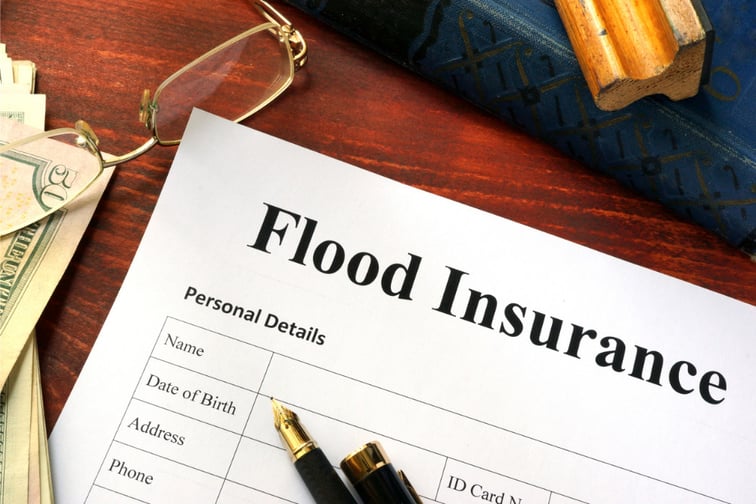

More than a million private properties, or about one in 10 homes, in Australia are exposed to some level of flood risk, according to a recent fact sheet published by Insurance Australia Group Limited (IAG).
The Flood Fact Sheet – which was developed by the insurance giant’s natural perils team, comprising of climate scientists, meteorologists, hydrologists, engineers, statisticians, and actuaries – also identified the local government areas (LGAs) that were at the highest risk of flooding.
Based on the total sum of premium at risk – the key metric that the researchers used – Brisbane and Townsville in Queensland, and Central Coast, Clarence Valley, Hawkesbury, Kempsey, Lismore, Shoalhaven, Tweed, and Wollongong in New South Wales were the 10 most flood-prone LGAs in Australia. The table below lists the LGAs in each state and territory that face the highest risk of flooding, according to IAG’s research. The Australian Capital Territory was excluded from the list because it has only on LGA.
|
State/Territory |
Local government area |
|---|---|
|
New South Wales |
Central Coast, Clarence Valley, Hawkesbury, Kempsey, Lismore, Narrabri, Richmond Valley, Shoalhaven, Tweed, Wollongong |
|
Queensland |
Brisbane, Bundaberg, Cassowary Coast, Cairns, Gold Coast, Ipswich, Moreton Bay, Noosa, Rockhampton, Townsville |
|
Victoria |
Benalla, Campaspe, Frankston, Greater Bendigo, Greater Geelong, Greater Shepparton, Maribyrnong, Melbourne, Mornington Peninsula, Wyndham |
|
Western Australia |
Bassendean, Belmont, Bunbury, Busselton, Carnarvon, Greater Geraldton, Harvey, Murray, Swan, Stirling |
|
Tasmania |
Central Coast, Devonport City, George Town, Huon Valley, Latrobe, Launceston City, Meander Valley, Northern Midlands, West Coast, West Tamar |
|
South Australia* |
Burnside, Gawler, Mid Murray, Murray Bridge, Renmark Paringa, West Torrens |
|
Northern Territory* |
Alice Springs, Katherine |
Source: IAG Flood Fact Sheet 2020
*Note: SA and NT have fewer LGAs and lower risk of flooding
Australians can also visit the government’s flood risk information portal to get an estimate of the risk of flooding in their areas. Developed by state and territory governments in partnership with the insurance industry, the portal also contains flood maps, flood studies, and details for surface water observation analysed with satellite imagery.
Read more: Townsville floods: the story on the ground
Geoscience Australia, the country’s national geoscientific research agency, also noted in the portal that just because an area has not experienced flooding in the past, it does not mean it would not be flooded in the future. Similarly, areas that have been flooded might not necessarily face flooding later. For this reason, the agency said that flood insurance might be worth investing in.
The Australian government defines flood as “the covering of normally dry land by water that has escaped or been released from the normal confines of any lake, or any river, creek or other natural watercourse, whether or not altered or modified; or any reservoir, canal, or dam.”
Following the massive flooding in Queensland in 2011, the government established this standard definition of “flood” for the insurance sector, with the intention of making flood cover a mandatory part of insurance policies. Although the government’s plan did not materialise, its definition of what constitutes flooding was retained by the industry.
Flood insurance is designed to protect the home and its contents against losses caused by a sudden deluge of water. This type of coverage is not always included in a standard home and contents insurance policy but can often be purchased as an add-on.
Some home insurance companies offer flood cover as a standard inclusion but allow policyholders to opt out. Others set coverage limits, meaning the amount that can be reimbursed may not be enough to cover the full cost of repairing flood damage.
Most flood insurance policies provide cover for losses and damages resulting from water escaping from its natural confinements such as rivers, creeks, and catchment systems, and sudden rainwater run-offs, including those from overflowing storm drains. Escaped liquid or water from burst pipes or overflowing sinks within the property are most likely covered as well. Some policies also offer coverage for flooding due to storm surges, but this is not standard.
As for exclusions, losses or damages caused by “actions of the sea,” including tidal flooding, tsunamis, or rise in seawater level, are mostly not covered. Flood insurance also does not provide a payout for man-made flooding such those resulting from home renovations.
Here are some insurance companies in the country offering flood coverage as part of their home and contents policies. All information is correct as of February 2022:
|
Insurer/Policy name |
Flood coverage offered |
|---|---|
|
ANZ Home & Contents Insurance |
Loss or damage caused by storm, rainwater, flood, or wind |
|
Australian Seniors Home & Contents Insurance |
Loss or damage caused by storm or flooding as part of basic cover |
|
Budget Direct Home & Contents Insurance |
|
|
Coles Home Insurance Plus |
Loss or damage caused by flood, which is defined as the covering of normally dry land by water that has escaped or been released from the normal confines of any of the following:
|
|
Huddle Home & Contents Insurance |
Loss or damage caused by flood, storm, and rainwater |
|
Kogan Home & Contents Insurance |
|
|
QBE Home Insurance |
|
|
Real Home Insurance |
|
|
St. George Home & Contents Insurance |
|
|
Virgin Money Home & Contents Insurance |
Loss or damage at the insured address caused by flood, defined as the covering of normally dry land by water that has escaped or been released from the normal confines of:
|
|
Westpac Home & Contents Insurance |
|
|
Woolworths Home & Contents Insurance |
|
